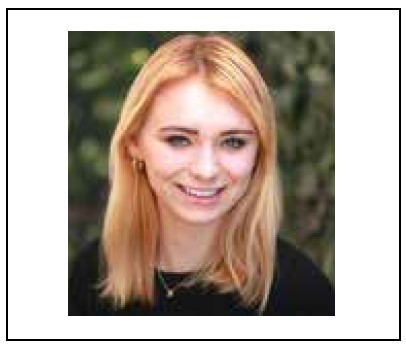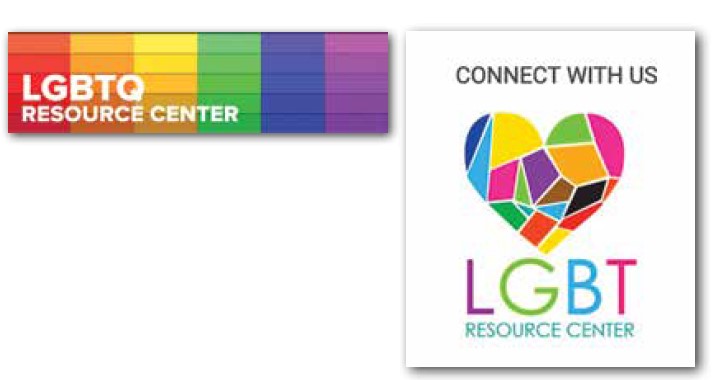
By Tabitha Parent–
(Editor’s Note: This issue of the San Francisco Bay Times launches a new column, Bi-Coastal, which will run through August. It is written by San Franciscan Tabitha Parent, who is a college student in Boston but is back home here in the Bay Area for the summer. She already has an impressive résumé, serving as a columnist for The Heights, Boston College’s independent, student-run newspaper; while also working for Samaritans, which is Boston’s 24/7 suicide prevention hotline. Previously, she was Student Body President (2020–2021) of her high school, where she also served as Managing Editor for the school’s newspaper—all while maintaining a weighted GPA of 4.5!

In this new column, she will address issues facing LGBTQ youth, with her unique perspective based on recent experiences in the Bay Area as well as in Northeastern states.)
My aversion to collared shirts today stems from the dress code at my Catholic, all-girls San Francisco high school. Though the buttoned-up dress code eventually devolved into a much laxer one that was more sympathetic to pajama pants (thanks, COVID), if you had looked at my class in our freshman year, you would have thought that we had just stepped off the boat from Nantucket. The preppy-ness levels were off the charts.
When you think Catholic, all-girls school, a few things probably come to mind, but one of the number ones is probably some version of “conservative.” Conservative in politics, conservative in religion, and conservative in dress code. Yet, despite most of my student body dressing like they had walked out of a Vineyard Vines catalog, the school was actually a lot more independent than it was Archdiocesan, and a lot more progressive than it was regressive.
Rather than Bible classes and skirts that came down to the ends of our fingertips when kneeling, we had Espacio (our school’s version of mindfulness; Spanish for “space”) and Chapel, where we celebrated everything from Eid to Rosh Hashanah to Día de los Muertos. We did attend the occasional Mass decked out in our “dress uniform” complete with skirts that rarely covered all they probably should have (it was not conservative, to say the least). Our clubs were expansive and varied: we had a People of Color Student Union (POCSU), an abundance of woman-centric clubs (Global Women’s Rights Club, Women in Tech), and even a Social Justice Literacy Club.
But, even for us, the idea of an LGBTQ+ resource center was a distant idea, a figment of imagination.
When I arrived on my East Coast college campus last fall, it felt like my high school on many levels— both were Catholic, with relatively small communities, and the fashion taste made it seem like the entire student body was perpetually preparing to grab a Dunkin’ Donuts before playing pickleball at the club with their grandpappy. But, where my high school promoted distinctly San Franciscan values of open acceptance and dialogue, my college took the conservatism usually more characteristic of a Catholic, all-girl school and ran with it like a marathon runner.
I joined the newspaper in college as soon as I could get my hands on an application and was instantly exposed to the darkest inner workings of the school’s administration (as journalists often are). At the time I joined, our paper had long been enmeshed in an investigation into one of the student body’s biggest questions to date: Why had the school repeatedly refused to establish an official, physical LGBTQ+ resource center despite the persistent pleas of its students to do so?
The answer? The administration felt that, while yes, their LGBTQ+-identifying college students deserved support, establishing a physical resource center would send clear, anti-faith messages at their Catholic college (ones that, perhaps, donors would not be so keen to support—but don’t tell them I told you so).
To say that religion and the LGBTQ+ community have often been at odds is an understatement. Most notable are the tensions between the LGBTQ+ community and the Catholic Church. But despite what the Church preaches, over half (54 percent) of the Catholics in the United States are in favor of same-sex marriage and only a third (33 percent) believe that homosexuality is a sin. While the congregation moves forward, the Church stays firmly rooted in the past.
But, for an institution of education, this refusal to move forward is an egregious sin. Schools should be welcoming to all who so desire to learn within them. Schools must also be places of escape—where students can seek shelter from whatever else plagues their outside lives. Establishing LGBTQ resource centers on college campuses is a necessity for schools—especially schools with religious backgrounds—to move forward and remain relevant in an ever-evolving culture of acceptance.
LGBTQ+ students make up an estimated 18–20 percent of college students (both undergraduate and graduate) in the U.S., and of that 18–20 percent, more than 25 percent had experienced some form of harassment as a result of their identity. Of the approximately 5,000 colleges in the U.S., there are only around 275 LGBTQ+ campus resource centers—a mere fraction of all of the colleges in the U.S.
LGBTQ+ resource centers on college campuses are directly correlated with lower levels of discrimination, less distress amongst LGBTQ+ college students, and even an increased sense of self-acceptance for LGBTQ+ students who may have experienced a decreased sense of self-worth as a result of discrimination that they may have faced. In short, they have been proven necessary.
My college has a physical space for a women’s center and a physical space for people of color, but not one for LGBTQ+ students. We know that diversity is not just limited to your gender and race. We know that it is not just limited to your sexuality either. But to acknowledge some marginalized facets of students’ identities and decline to acknowledge others sets a precedent. My college diminishes itself as an institution of learning by refusing to learn itself. LGBTQ+ students deserve a fully staffed, physical resource center, not just for their own growth, but for the growth of all their peers in the hopes that institutions of higher education can be leaders in a culture of acceptance.
Tabitha Parent was born and raised in San Francisco and has just completed her first year of college at Boston College. In the fall, she will be a sophomore at Northwestern University studying journalism at the Medill School of Journalism. In her free time, she enjoys writing poetry and running on trails in the Presidio.
Published on June 9, 2022
Recent Comments